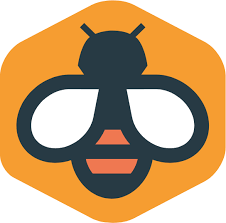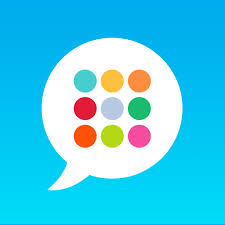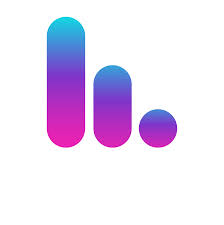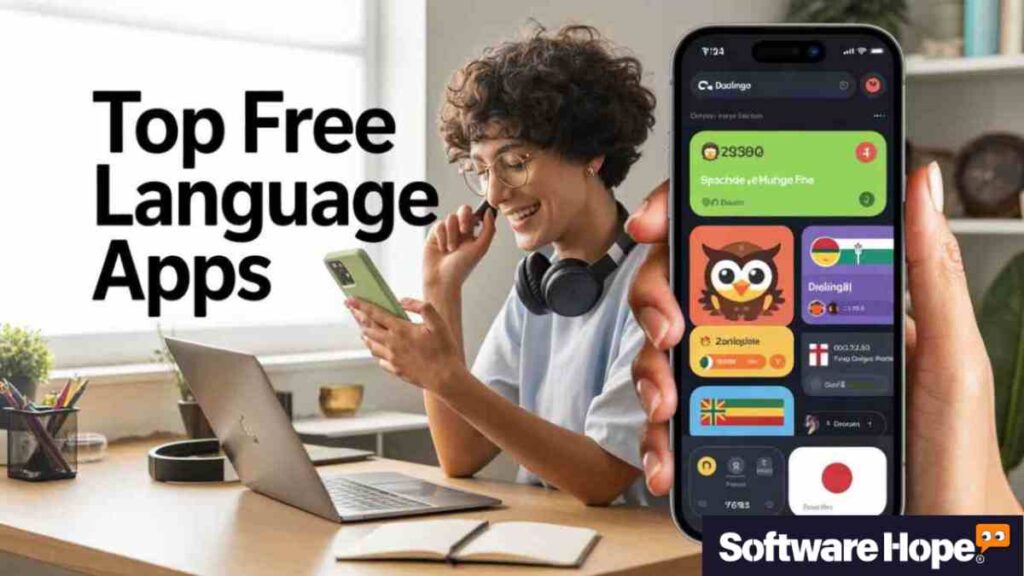Learning a new language doesn’t have to cost a lot anymore — actually, it doesn’t have to cost anything! Yep, yep, that’s right! There are so many Free Language Learning Apps out there now, and some of them are kinda awesome.
Whether you’re learning Spanish for a trip or trying Japanese because, well, anime is life — there’s an app out there just for you. Not gonna lie, a bunch of these free ones are just as good as the fancy paid apps.
In this post, we’re gonna check out the top free language learning apps that’ll help you learn a new language without spending any money. We’ll go through the best language learning apps everyone’s buzzing about — like Duolingo (you’ve probably heard of that one!) — and even show you some cool ones that not many people know about.
You’ll see what I mean once we get into it. Whether you like fun games, short stories, or talking to real people online, there’s something here for you. So if you’re looking for the best online language learning apps or just wanna try out a few good online language learning platforms, stick around!
Learning languages online has never been easier — or more fun.
Table of Contents
Comparison of 15 Best Free Language Learning Apps for 2025
| Sr | Image | Name | Rating | Pricing | Compatibility | Features | Software Page |
|---|---|---|---|---|---|---|---|
| 1 |

|
Duolingo |
4.5
|
Freemium | iOS, Android, Web-based |
|
View Details |
| 2 |

|
Beelinguapp |
4.2
|
Freemium | iOS, Android, Web-based |
|
View Details |
| 3 |

|
Memrise |
4.3
|
Freemium | iOS, Android, Web-based |
|
View Details |
| 4 |

|
Busuu |
4.4
|
Freemium | iOS, Android, Web-based |
|
View Details |
| 5 |

|
50Languages |
4.0
|
Free | iOS, Android, Web-based |
|
View Details |
| 6 |

|
Mondly |
4.2
|
Freemium | iOS, Android, Web-based |
|
View Details |
| 7 |

|
Innovative Language |
4.1
|
Freemium | iOS, Android, Web-based |
|
View Details |
| 8 |

|
Drops |
4.3
|
Freemium | iOS, Android |
|
View Details |
| 9 |

|
LingQ |
4.1
|
Freemium | iOS, Android, Web-based |
|
View Details |
| 10 |

|
Tandem |
4.2
|
Freemium | iOS, Android, Web-based |
|
View Details |
| 11 |

|
Lingopie |
4.0
|
Paid | iOS, Android, Web-based |
|
View Details |
| 12 |

|
Babbel |
4.4
|
Paid | iOS, Android, Web-based |
|
View Details |
| 13 |

|
Lirica |
4.0
|
Freemium | iOS, Android |
|
View Details |
| 14 |

|
Google Translate |
4.8
|
Free | Windows,Mac,Android,iPhone,Web-based |
|
View Details |
| 15 |

|
Rosetta Stone |
4.2
|
Freemium | iOS, Android, Windows, Mac, Web-based |
|
View Details |
1. Duolingo: Duolingo is one of the most popular free language learning apps that makes studying feel like playing a fun mobile game.
Duolingo is kinda like the king of Free Language Learning Apps and yeah, there’s a pretty good reason why. If you’re just starting out and don’t wanna stress, it’s a great pick. The lessons are super short and fun, like you’re playing a little game on your phone instead of sitting through a boring class.
Yep, yep, that’s what makes it fun — it pulls you in without making it feel like “ugh, I’m studying.” You start learning just a few words, then a few more… and boom! You’re picking up a whole new language without even realizing it.
Not gonna lie, that little owl guy they use? He will keep bugging you with reminders — but hey, it works. It kinda keeps you on track. You’ll feel awesome when you get those achievement badges too. It’s honestly one of the best language learning apps out there for building a habit every day.
So if you’re checking out the top free language learning apps or wanna try some languages online just for fun, Duolingo is one of the top online language learning apps to start with. You’ll see what I mean once you try it!
Key Features
- Gamified lessons with streaks, points, and achievements that make learning feel like playing
- Over 40 languages available, from Spanish and French to Welsh and Klingon
- Stories feature that helps you practice reading comprehension in a fun way
- Duolingo Plus removes ads and adds offline access (but the free version’s honestly pretty great)
- Super short lessons that fit perfectly into busy schedules — we’re talking 5-10 minutes max
- Community forums where you can ask questions and get help from other learners
Pros & Cons
✅ Pros
- Completely free core experience with tons of content available
- The gamification really works — you'll actually want to come back every day
- Lessons are short enough that you won't feel overwhelmed or burnt out
- Works great for building vocabulary and basic grammar understanding
- The streak system is genuinely motivating (even if it gets a bit intense sometimes)
- Clean, colorful interface that's easy to navigate for all ages
❌ Cons
- Can feel repetitive after a while — same lesson formats over and over
- Grammar explanations are sometimes pretty basic and could use more depth
- The free version has ads between lessons (though they're not too annoying)
- Limited conversation practice compared to speaking with actual people
Device Compatibility:
Yeah, it runs well on all the big platforms — iOS, Android, and you can use it on your computer through their website too. The mobile apps are definitely where Duolingo shines though.
Pricing:
The basic Duolingo is completely free, which is honestly amazing considering how much content you get. Duolingo Plus costs around $6.99/month and removes ads, adds offline lessons, and gives you unlimited hearts. There’s a free plan too — which is great for most people just starting out.
Customer Support:
Support’s decent — they have a pretty comprehensive help center with lots of FAQ answers. You can submit tickets through their website, though not sure how fast they reply since there’s no live chat. The community forums are actually really helpful for getting quick answers from other users.
2. Beelinguapp: Beelinguapp is among the best free language learning apps that teaches through side-by-side stories in two languages.
Beelinguapp is kinda different from other apps — it helps you learn by reading stories side by side in two languages. If you learn better by reading and understanding stories instead of just flashcards, you’ll really like this one. It’s great for people who already know some basics and want to get better at reading, while enjoying cool stuff like fairy tales, news, or even old classic books.
The app shows you the words in your new language and your own language at the same time, which is super helpful to get what’s going on. Not gonna lie, this one surprised me because it feels more like reading a fun book than doing boring lessons. You can even listen to native speakers read the stories out loud — that’s awesome for getting your pronunciation right and practicing listening.
If you’re looking for the best free language learning apps, especially ones that teach through stories, Beelinguapp is definitely one of the top free language learning apps out there. It’s perfect if you want to learn languages online without the usual grammar drills. Yep, yep, that’s helpful! You’ll see what I mean when you try it.
Key Features:
- Side-by-side text display in your native language and target language for easy comparison
- Audio narration by native speakers so you can hear proper pronunciation
- Wide variety of content from fairy tales to current news articles and scientific texts
- Reading speed control lets you go at your own pace without feeling rushed
- Offline reading capability so you can learn even without internet connection
- Multiple difficulty levels from beginner-friendly stories to advanced literature
Pros & Cons
✅ Pros
- Reading real stories is way more engaging than typical language exercises
- The bilingual format makes it easy to understand context and meaning
- Audio feature helps you learn proper pronunciation and rhythm of the language
- Content variety keeps things interesting — there's always something new to read
- Great for building vocabulary naturally through context rather than memorization
- Free version gives you access to plenty of stories and articles
❌ Cons
- Might not be the best choice if you're a complete beginner with zero vocabulary
- Limited interactive exercises compared to other language learning platforms
- Some premium content requires subscription to access the really good stuff
Device Compatibility:
Works great on both iOS and Android devices. The reading format is perfect for mobile screens, and you can also access it through their website on computers.
Pricing:
There’s a solid free version that gives you access to a bunch of stories and basic features. The premium subscription is around $2.99/month, which honestly isn’t too pricey for unlimited access to all content and features.
Customer Support:
They have an email support system and a decent FAQ section. Not sure about live chat availability, but the app is pretty straightforward to use, so you probably won’t need much help.
3. Memrise: Memrise stands out as one of the top free language learning apps using smart memory tricks to help words stick better.
Memrise is all about helping you remember words super easily using smart little tricks. Yep, yep, it’s like flashcards—but way cooler and more fun. What’s really awesome? It shows real videos of people who actually speak the language, so you hear how they really talk in everyday life.
If you always forget new words (been there!), this one’s one of the best language learning apps to build your word power. Not gonna lie… those funny memory tricks, called “mems,” might seem silly at first—but wow, they work! You’ll see what I mean.
Memrise mixes smart science-y stuff with fun lessons, and it’s great for learning languages online in a chill way. It’s not boring textbook stuff—it’s real talk you’d actually use. So if you’re hunting for free language learning apps, this one’s high on the list of top free language learning apps and one of the top online language learning apps out there. Wanna try something other than Duolingo? Give this a go!
Key Features:
- Spaced repetition system that shows you words right when you’re about to forget them
- Real video clips of native speakers so you hear authentic pronunciation and accents
- User-generated memory tricks (mems) that make vocabulary easier to remember
- Courses created by both Memrise team and community members for diverse content
- Offline mode lets you review words even when you don’t have internet access
- Grammar lessons integrated with vocabulary to give you complete language understanding
Pros & Cons
✅ Pros
- The spaced repetition really works — words actually stick in your long-term memory
- Native speaker videos give you real-world pronunciation, not robotic voice recordings
- Memory techniques make learning vocabulary fun instead of just boring repetition
- Huge variety of courses covering everything from basic phrases to specialized topics
- Free version offers substantial content without feeling too limited or restricted
- Progress tracking helps you see how much you've actually learned over time
❌ Cons
- Can feel a bit overwhelming at first with all the different memory techniques
- Some community-created courses vary in quality — you gotta find the good ones
- The free version limits how many words you can learn per day
Device Compatibility:
Runs smoothly on iOS, Android, and web browsers. The mobile experience is definitely optimized better than the desktop version though.
Pricing:
The free plan gives you access to basic courses and limited daily learning. Memrise Pro costs about $8.99/month and unlocks unlimited learning, all courses, and advanced features. There’s a free plan too — which is great for testing out their method.
Customer Support:
Support’s available through email and they have a pretty good help center with lots of articles. The community forums are also helpful for getting tips from other users, which is nice.
4. Busuu: Busuu offers structured lessons from language experts, making it one of the better free language learning apps available.
Busuu is kinda like having a real language teacher in your pocket. It’s one of those {{Free Language Learning Apps}} that feels a bit more serious but still easy to use. The lessons? Yep, yep — they’re made by real language pros, not just some robot guessing what you need.
If you’re someone who wants more than just tapping flashcards but don’t wanna sit in a boring class, this one’s for you. You learn stuff you’ll actually say in real life—like at the airport, in a shop, or at work. Not just random words like “apple” or “tiger” (unless you really need that, haha).
What’s really cool? Real people—like native speakers—can check your writing and speaking. They give you tips, tell you what sounds off, and help you get better. Honestly, that surprised me. It’s way better than just some app saying “good job” no matter what.
So yeah, if you’re looking for one of the {{best language learning apps}} or {{top online language learning apps}}, Busuu totally deserves a spot on your list. Way better than just guessing words and hoping for the best!
Key Features:
- AI-powered study plan that adapts to your learning speed and available time
- Lessons created by language education experts rather than just computer algorithms
- Speaking practice with speech recognition technology to improve your pronunciation
- Writing exercises reviewed by native speakers in the Busuu community
- Official certificates and completion badges that you can add to your LinkedIn profile
- Offline mode lets you download lessons and study without internet connection
Pros & Cons
✅ Pros
- More structured and comprehensive than most free language learning apps
- Native speaker feedback on writing exercises is incredibly valuable for improvement
- Lessons focus on practical, real-world language skills you'll actually use
- The study plan feature helps you stay on track with realistic daily goals
- Good balance between grammar, vocabulary, listening, and speaking practice
- Premium content quality is noticeably higher than many other language learning platforms
❌ Cons
- Free version is pretty limited compared to what you get with premium subscription
- Can feel a bit formal and less gamified than other language apps
- Some lessons move pretty quickly and might overwhelm complete beginners
Device Compatibility:
Works well on iOS, Android, and web browsers. The mobile apps have better user experience than the desktop version, honestly.
Pricing:
The free version gives you access to limited lessons and basic features. Busuu Premium costs around $9.99/month for full access to all languages and features. Not too pricey, honestly, considering the quality of content you get.
Customer Support:
They offer email support and have a decent help center. Live chat isn’t available, but their response times are generally pretty good according to user reviews.
5. 50Languages: 50Languages provides basic lessons in 50 different languages, making it one of the most diverse free language learning apps.
50Languages is just what it sounds like — an app where you can learn 50 different languages. Yep, 50! Kinda crazy for a free app, right? It’s great if you’re traveling or just wanna try out new languages without making a big deal out of it. You get about 100 short lessons in each language that teach real stuff like how to order food, ask for help, or say hi. It’s all super practical and straight to the point.
What’s really cool? It includes not just big languages like Spanish or German, but also lesser-known ones like Afrikaans or Telugu. Not gonna lie, the design’s a bit plain compared to the best language learning apps out there, but hey—it works. If you’re hunting for top free language learning apps or just wanna explore languages online, this one’s worth checking out. It’s one of the best online language learning apps if you’re all about learning without the fancy extras.
Key Features:
- Massive selection of 50 languages including many rare and less common options
- Audio lessons with native speaker pronunciation for authentic listening practice
- Practical vocabulary focused on real-life travel and conversation scenarios
- Simple, no-frills interface that’s easy to navigate without distractions
- Completely free with no premium tiers or subscription requirements
- Lessons organized by topics like family, shopping, transportation for easy reference
Pros & Cons
✅ Pros
- Incredible language variety — you'll find languages that other apps don't offer
- Completely free with no ads or premium features trying to upsell you
- Perfect for learning basic travel phrases quickly before a trip
- Audio quality is good with clear native speaker pronunciation
- Lessons are short and focused, making it easy to fit into busy schedules
- No account registration required — you can just download and start learning immediately
❌ Cons
- Pretty basic interface that looks a bit outdated compared to modern language apps
- Limited depth — great for basics but won't take you to advanced proficiency
- No interactive exercises or games to make learning more engaging
- Lacks grammar explanations or cultural context for the phrases you learn
Device Compatibility:
Available on iOS and Android, plus you can access lessons through their website. Works fine on all platforms, though the mobile apps are more convenient.
Pricing:
Everything is completely free! No premium version, no subscriptions, no hidden costs. It’s honestly refreshing to find an app that doesn’t try to upsell you constantly.
Customer Support:
Support options are pretty limited since it’s a completely free app. There’s basic contact information on their website, but don’t expect live chat or immediate responses.
6. Mondly: Mondly uses cool AR technology and speech recognition, putting it among the most innovative free language learning apps.
Mondly is one of those free language learning apps that’s kinda cool, not gonna lie. It mixes old-school language learning with fun tech stuff like AR and VR — yep, like you’re learning in the future! If flashcards bore you to sleep, this one’s way more fun and visual. It teaches 41 languages using short daily lessons, weekly quizzes, and even monthly challenges to keep you hooked. What’s awesome?
You don’t just learn random words — you learn real phrases that actually make sense in real-life chats. And hey, the speech recognition? Pretty solid! It picks up on your pronunciation slip-ups so you can get better without feeling weird. Try the convo practice and you’ll see what I mean. It’s one of the best language learning apps out there, especially if you wanna speak more confidently. Definitely among the top online language learning apps if you ask me!
Key Features:
- Augmented reality lessons that let you learn vocabulary by pointing your camera at objects
- Advanced speech recognition that gives you instant feedback on your pronunciation
- Daily lessons with weekly quizzes and monthly challenges to maintain consistency
- Conversation practice with a chatbot that responds to your voice commands
- Conjugation tables and grammar lessons integrated naturally into vocabulary practice
- Leaderboards and achievements to add some friendly competition with other learners
Pros & Cons
✅ Pros
- The AR features are genuinely fun and make vocabulary learning more memorable
- Speech recognition works well and actually helps improve your pronunciation
- Good variety of exercise types keeps lessons from getting boring or repetitive
- Free version offers substantial content including daily lessons and basic features
- Interface is modern and intuitive — everything feels smooth and well-designed
- Covers both European and Latin American Spanish, which is helpful for travelers
❌ Cons
- Some of the cooler features like AR require a premium subscription to fully access
- Can feel a bit gimmicky sometimes — the tech is cool but not always necessary
- Free version limits how many lessons you can access per day
Device Compatibility:
Works great on iOS and Android with full AR support on compatible devices. Web version is available but doesn’t have all the advanced features that make Mondly special.
Pricing:
Free version includes daily lessons and basic features. Mondly Premium costs around $9.99/month and unlocks all languages, unlimited access, and advanced features like AR lessons. There’s a free plan too — which is great for trying out their approach.
Customer Support:
They have email support and a help center with FAQ sections. Response times are generally decent, though there’s no live chat available for immediate help.
7. Innovative Language: Innovative Language creates podcast-style lessons, making it perfect for people who prefer audio-based free language learning apps.
Innovative Language is like a bunch of cool apps for different languages—like SpanishPod101, FrenchPod101, and JapanesePod101. They teach you through fun, podcast-style lessons. Yep, yep, it’s super helpful if you like listening while walking, working out, or just chillin’. The lessons are made by real native speakers and teachers, so you get the real way people talk—plus grammar, vocab, and even culture tips! Not gonna lie… it feels more like a fun radio show than studying. What’s cool is the lessons sound like real chats you’d have in everyday life. At first, the podcast style felt a bit different, but now I actually enjoy it. It’s one of the best language learning apps out there—especially if you like learning while doing other stuff. If you’re into learning languages online, this is one of the top free language learning apps for sure. Definitely belongs on the list of best online language learning apps like Duolingo and other free language learning apps.
Key Features:
- Podcast-style audio lessons ranging from absolute beginner to advanced levels
- Cultural insights and context woven naturally into language instruction
- Lesson transcripts and vocabulary lists for visual learners who need to see words
- Huge library of content with hundreds of hours of lessons per language
- Mobile apps optimized for audio learning with offline download capabilities
- Community features where you can interact with other learners and native speakers
Pros & Cons
✅ Pros
- Audio format is perfect for learning during commutes or while doing other activities
- Lessons feel natural and conversational rather than robotic or overly formal
- Cultural context helps you understand not just what to say but when and why
- Massive content library means you'll never run out of new material to explore
- Native speaker hosts provide authentic pronunciation and natural speech patterns
- Free tier gives you access to plenty of lessons without requiring payment
❌ Cons
- Might not work well for visual learners who need to see words written out
- Can feel overwhelming at first because there's just so much content available
- Some advanced features and lesson series require premium subscription access
Device Compatibility:
Available on iOS, Android, and through web browsers. The audio format works well on all platforms, and you can even listen through podcast apps.
Pricing:
Basic access is free with limited lessons and features. Premium subscriptions vary by language but typically cost around $8-15/month for unlimited access to all content and features.
Customer Support:
Email support is available along with community forums where you can get help from other users. The support team is generally responsive, though live chat isn’t available.
8. Drops: Drops teaches vocabulary through beautiful visuals and gestures, making it one of the most artistic free language learning apps.
Not gonna lie… Drops is kinda awesome if you’re into learning with pictures. It’s all about picking up new words by swiping, tapping, and matching cool little drawings like a fun, chill puzzle game. No boring flashcards or walls of text. Just quick, simple lessons that actually feel fun.
It’s perfect if big blocks of text stress you out or if you remember stuff better with images. And get this: the free version only lets you play for 5 minutes a day, but weirdly, that’s a good thing. Yep, yep, it keeps you from getting bored or burned out.
Honestly, it feels more like relaxing than studying. That’s why it’s one of the top free language learning apps out there especially if you are more of a visual learner. If you have tried other language apps and felt like they were too much, Drops might be the best language learning app for you. It’s a fun way to explore languages online without the pressure.
Key Features:
- Stunning visual design with beautiful illustrations instead of boring text flashcards
- Quick 5-minute daily sessions that prevent burnout and maintain focus
- Gesture-based learning where you swipe, tap, and drag to interact with words
- Over 45 languages including some less common options like Icelandic and Maori
- Topics organized by themes like food, family, travel for practical vocabulary building
- No typing required — everything is learned through visual association and gestures
Pros & Cons
✅ Pros
- Absolutely gorgeous interface that makes learning feel like playing an art game
- Perfect for people who learn better through visual association than text memorization
- Short sessions prevent overwhelm and make it easy to build consistent daily habits
- No pressure or stress — you can't really fail or get things wrong in a traditional sense
- Great for building core vocabulary quickly without getting bogged down in grammar rules
- Works well as a supplement to other language learning methods and apps
❌ Cons
- Only focuses on vocabulary — no grammar, conversation practice, or sentence construction
- Free version limits you to just 5 minutes per day, which can feel restrictive
- Might feel too simple or game-like for serious learners who want comprehensive instruction
Device Compatibility:
Available on iOS and Android with beautiful, touch-optimized interfaces. The visual design really shines on mobile devices with good screens.
Pricing:
Free version gives you 5 minutes of learning per day. Drops Premium costs around $9.99/month and removes the time limit plus adds extra features. There’s a free plan too — which is great for casual vocabulary building.
Customer Support:
Support is available through email and their help center. The app is pretty intuitive to use, so you probably won’t need much assistance, but they’re responsive when issues come up.
9. LingQ: LingQ helps you learn through real content like news and books, making it unique among free language learning apps.
LingQ’s got a pretty different vibe from most apps. Instead of lessons and drills, you’re diving into real stuff—like news, podcasts, books, and videos in the language you’re learning. Yep, yep, that’s helpful ’cause it’s stuff real people actually use. As you read, the app highlights words you don’t know, and you can tap ’em for a quick translation. Super handy!
It’s great if you’re past the basics and wanna level up with real-life content. Not gonna lie, seeing tons of words you don’t know can feel a bit scary at first… but hey, that’s how you grow! What’s cool is it tracks your vocab as you go. Honestly, it’s one of the best language learning apps if you’re into learning by doing instead of boring lessons.
If you’re checking out free language learning apps or the top online language learning apps, LingQ should be on your list. Way better than just memorizing stuff—more like living the language.
Key Features:
- Massive library of authentic content including books, articles, podcasts, and videos
- Click-to-translate feature that instantly shows definitions and saves new vocabulary
- Vocabulary tracking system that shows your progress as you learn new words
- Audio lessons with transcript highlighting so you can follow along while listening
- Import feature lets you add your own content like ebooks or articles to study
- Spaced repetition flashcard system for reviewing saved vocabulary words
Pros & Cons
✅ Pros
- Learning through real content feels more natural and engaging than artificial lessons
- Huge variety of content means you can learn about topics that actually interest you
- Vocabulary tracking gives you a clear sense of progress and achievement over time
- Great for developing reading comprehension and expanding vocabulary naturally
- Import feature means you can study literally any content you find interesting
- Free version gives you access to substantial content without requiring payment immediately
❌ Cons
- Can be overwhelming for beginners who don't have basic vocabulary foundation yet
- Interface feels a bit dated and cluttered compared to more modern language apps
- Some of the best content and features require a premium subscription to access
Device Compatibility:
Available on iOS, Android, and web browsers. The reading experience works well on all platforms, though mobile apps are more convenient for on-the-go learning.
Pricing:
Free version includes limited content and basic features. LingQ Premium costs around $12.99/month for unlimited access to all content and advanced tracking features. Not too pricey, honestly, considering the vast content library.
Customer Support:
Email support and help center are available. The community forums are also pretty active with helpful users who can answer questions about using the platform effectively.
10. Tandem: Tandem connects you with native speakers for real chats, making it one of the most social free language learning apps.
Tandem’s kinda like having a language buddy in your pocket. Instead of chatting with robots or doing boring drills, you talk to real people who speak the language you’re trying to learn—and they’re learning yours too! You can text, voice call, or even video chat. Yep, yep, that’s helpful! There’s also a cool feature where you can fix each other’s mistakes, so you both get better.
Honestly, it surprised me. It feels more like a social app than the usual language learning stuff. You’ll see what I mean when you’re having real convos, not just the usual “I’d like a coffee, please” lines. Not gonna lie, it’s a little scary talking to strangers at first, but that’s what makes it so great.
If you’re looking for free language learning apps that actually help with real-life chatting, this one’s up there with the best language learning apps. It’s one of the top free language learning apps for sure.
Key Features:
- Direct messaging with native speakers who want to learn your language
- Voice and video calling features for authentic speaking practice with real people
- Built-in correction tools so you can help each other fix mistakes naturally
- Profile matching system that connects you with compatible language partners
- Community features including language learning groups and cultural discussions
- Translation and pronunciation help integrated right into the chat interface
Pros & Cons
✅ Pros
- Real conversation practice with native speakers beats any artificial chatbot system
- Cultural exchange aspect makes learning feel more meaningful and personally rewarding
- Free version gives you access to basic messaging and partner matching features
- Great way to make international friendships while improving your language skills
- Immediate feedback from native speakers helps you sound more natural quickly
- Flexible format lets you practice through text, voice, or video based on comfort level
❌ Cons
- Quality of language partners can vary — some are more helpful and committed than others
- Can feel intimidating for shy people or complete beginners with no basic vocabulary
- Requires more initiative and social effort compared to structured app-based lessons
Device Compatibility:
Works well on iOS and Android with full chat, voice, and video capabilities. Web version is available but the mobile experience is definitely better for messaging.
Pricing:
Basic Tandem is free and includes messaging and basic matching features. Tandem Pro costs around $6.99/month and adds unlimited translations, verified profiles, and priority matching. There’s a free plan too — which is great for getting started with language exchange.
Customer Support:
Support’s available through email and their help center. They also have community guidelines and reporting features to keep the platform safe and helpful for language learning.
11. Lingopie: Lingopie teaches languages through TV shows and movies, making it the most entertaining among free language learning apps.
Wanna learn a new language while watching TV? Yep, it’s totally a thing! Lingopie is like Netflix, but for language learners. You watch shows and movies in another language, and when you click on a word in the subtitles, bam—instant translation. It even saves the words so you can review ’em later with flashcards and quizzes. Pretty cool, right?
It’s perfect for anyone who loves to binge-watch and wants to turn that into something kinda productive. You get to learn stuff like slang, jokes, and real-life speech—way more fun than boring grammar drills. Honestly, it feels more natural, like how kids learn to talk.
Not gonna lie, it’s one of the best language learning apps out there. If you’re into watching stuff and picking up languages online, this one’s a winner. Definitely up there with the top free language learning apps and perfect if you’re searching for free language learning apps like Duolingo.
Key Features:
- Interactive subtitles that let you click any word for instant translation and grammar info
- Extensive library of TV shows and movies in multiple languages with various genres
- Flashcard system that automatically creates review cards from words you’ve clicked
- Progress tracking that shows your vocabulary growth through watching content
- Multiple subtitle options including your native language and target language simultaneously
- Difficulty filtering so you can find shows appropriate for your current skill level
Pros & Cons
✅ Pros
- Learning through entertainment is way more engaging than traditional boring exercises
- Authentic content teaches you how people actually speak in real life situations
- Cultural context comes naturally through storylines and character interactions
- Vocabulary learned through stories sticks better than isolated flashcard memorization
- Great variety of content means you can find shows that match your interests
- Free trial gives you access to plenty of content before requiring subscription
❌ Cons
- Requires subscription for full access — not truly free like some other language apps
- Might not be suitable for complete beginners who need more structured basic instruction
- Can be distracting if you get too caught up in the plot and forget to focus on learning
Device Compatibility:
Available on iOS, Android, and web browsers. The streaming experience works best on tablets or computers with larger screens, honestly.
Pricing:
Free trial available, but full access requires subscription starting around $12/month. The pricing varies based on subscription length and current promotions they’re running.
Customer Support:
Email support and help center are available. Since it’s a subscription service, they’re generally pretty responsive to customer inquiries and technical issues.
12. Babbel: Babbel focuses on practical conversation skills, making it one of the most useful free language learning apps for travelers.
Babbel’s all about helping you talk in real-life situations, not just tossing grammar rules or random words at you. The lessons focus on stuff you’d actually say in everyday conversations. And since they’re made by real language pros, you can tell right away — everything just makes sense.
It is a solid pick for adults who want to use a new language for travel, work, or relationships, not just to pass some test. Each lesson builds on the last one, so things don’t feel random. You are always learning useful phrases and grammar that you’ll really use when you talk to people.
That’s what makes Babbel stand out from other free language learning apps. It kicks off with stuff you need right away, like saying your name, asking for help, or ordering food. You are not stuck learning weird words like elephant or purple for no reason. Honestly, it feels more like getting ready for real life than playing around with some app. If you have got a goal in mind and want real progress, it’s one of the top free language learning apps out there.
Key Features:
- Lessons created by language education experts rather than just computer algorithms
- Focus on practical conversation skills for real-world situations like travel and work
- Speech recognition technology that helps you practice pronunciation with immediate feedback
- Cultural insights woven into lessons so you understand context behind the language
- Review sessions using spaced repetition to help vocabulary stick in long-term memory
- Personalized lesson recommendations based on your goals and learning progress
Pros & Cons
✅ Pros
- High-quality lessons that feel professionally designed rather than thrown together randomly
- Practical focus means you're learning language skills you'll actually use regularly
- Good balance of vocabulary, grammar, listening, and speaking practice in each lesson
- Speech recognition works well and gives helpful feedback on pronunciation improvements
- Lessons are just the right length — not too short to be useless, not too long to be overwhelming
- Cultural context helps you understand when and how to use different phrases appropriately
❌ Cons
- Free version is extremely limited — basically just a trial to get you to subscribe
- More expensive than many other language learning platforms and apps
- Can feel a bit formal and less gamified compared to more playful language apps
Device Compatibility:
Works well on iOS, Android, and web browsers. The mobile apps have slightly better user experience than the desktop version.
Pricing:
Very limited free trial, then subscription starts around $13.95/month for one language. Not too pricey, honestly, considering the professional quality of content, but it’s definitely not free.
Customer Support:
Good email support and comprehensive help center. They’re generally responsive since you’re paying for the service, which is nice compared to free apps with limited support.
13. Lirica: Lirica teaches Spanish and Portuguese through music, making it one of the most creative free language learning apps available.
Lirica is one of the coolest free language learning apps out there — especially if you’re into music. It teaches Spanish and Portuguese using Latin songs. So if you learn better through beats, catchy tunes, and singing along, this app is pretty much made for you.
Instead of those boring lessons about buying apples or asking for directions, you’ll be picking up real words and grammar from songs by artists like Jesse & Joy, Manu Chao, and more. The app shows you each line of the lyrics, breaks them down, explains the grammar, and even helps you say the words right. It’s kind of like karaoke mixed with a Spanish class.
What makes it special? Well, music just makes stuff stick better. You get the rhythm, the sound, and the feel of the words all at once. Honestly, you’ll probably catch yourself humming Spanish phrases all day without even trying. Way better than flipping through flashcards, right?
You’ll see how much more fun learning a language can be when it comes with beats and real culture. If you’re tired of the same old lessons, this is one of the top free language learning apps to try — especially if you’re a music lover who wants to learn Spanish or Portuguese in a fun, natural way.
Key Features:
- Learn through real songs by popular Latin artists rather than artificial dialogues
- Line-by-line lyric breakdown with grammar explanations and vocabulary definitions
- Pronunciation practice through singing along with original tracks and karaoke-style features
- Cultural context about artists and songs to understand Latin American and Spanish culture
- Beginner to advanced levels with songs selected based on complexity and vocabulary
- Offline mode so you can practice singing and learning even without internet connection
Pros & Cons
✅ Pros
- Way more enjoyable than boring textbook exercises, trust me
- Songs stick in your head, so you remember vocabulary longer
- Learn how people actually speak, not just formal language
- High-quality audio from real artists, not robotic voices
- Feels more like a music app than studying
- Free seven-day trial to test it out
❌ Cons
- Limited language selection compared to other apps
- Might not work if you're not into music learning
- Some songs have mature content that might not suit everyone
- Free version is pretty limited before hitting the paywall
Device Compatibility:
Yeah, Lirica runs well on all the big platforms. You can download it on iPhone, Android, and use it on tablets too. The app works smoothly across devices, so you can start a lesson on your phone and pick it up later on your tablet without any issues.
Pricing:
Lirica is free to try for seven days. After that, a relatively low-priced membership unlocks all the premium content. The free download includes limited access to content; subscribe to unlock all the lessons. Not too pricey, honestly, especially considering you’re getting high-quality music content and professional song licensing.
Customer Support:
Support seems decent from what I can tell. They have a help center on their website with FAQs and troubleshooting guides. For more specific issues, you can reach out through their contact form. Not sure how fast they reply, but the support channels are available when you need them.
14. Google Translate: Google Translate instantly translates text and speech, making it an essential tool alongside other free language learning apps.
Google Translate is probably one of the most well known free language learning apps out there and honestly, there is a good reason for that. Even though it’s mainly a translation tool, it is also turned into a really helpful way to learn new languages. Tons of people use it every day.
With the Google Translate app, you can pick from 133 languages to translate to or from. Yep, 133! That’s kind of wild when you think about it.
What makes this one stand out among the best online language learning apps is how much stuff it can do. It is not just for typing in words anymore. You can use it offline, which is super handy if you do not have internet. You can also point your camera at a sign or menu, and it’ll tell you what it says right away. It even works with photos you have already taken.
That means if you are walking around Tokyo and see a street sign you do not get, you can just aim your phone at it boom, instant translation.
So yeah, it’s not just about learning in a classroom. Google Translate has become a real world tool that helps with language learning in everyday life. Whether you are online or offline, it is there to help you figure out what things mean fast.
Key Features:
- Instant camera translation that transforms text in real-time
- Offline translation for dozens of languages without internet
- Voice translation perfect for travel conversations
- Handwriting recognition for complex scripts and characters
- Photo translation for signs, menus, and documents
- Two-way conversation mode for real-time chats
Pros & Cons
✅ Pros
- Completely free with no hidden costs or premium tiers
- Massive database covering 133 different languages
- Works offline once you download language packs
- Camera translation is super accurate and fast
- Constantly improving through AI and machine learning
- Integrates well with other Google services
❌ Cons
- Sometimes translations are literally correct but miss context
- More of a translation tool than a proper learning platform
- Pronunciation guides could be more detailed and helpful
- Limited explanations for why certain translations work
Device Compatibility:
Google Translate works everywhere, honestly. It’s available on iPhone, Android, and through any web browser on Windows, Mac, or Linux. The mobile apps are where it really shines though, especially with the camera features that need your phone’s hardware.
Pricing:
It’s totally free! Google doesn’t charge anything for Google Translate, which is incredible considering how powerful and useful it is. No trials, no premium versions, no hidden fees – just a completely free service that you can use as much as you want.
Customer Support:
Since it’s a Google product, support goes through their standard help channels. There’s a comprehensive help center with articles and troubleshooting guides. For technical issues, you can report problems through the app or Google’s feedback system. Response times vary, but the help documentation is pretty thorough.
15. Rosetta Stone: Rosetta Stone uses immersion-based learning, making it one of the most comprehensive free language learning apps available.RetryClaude can make mistakes. Please double-check responses.
Rosetta Stone’s been around forever and is still one of the most well known free language learning apps out there. Even though it’s mostly a paid app, they do give you a pretty solid free trial to try things out. You can learn up to 25 languages, and they’ve got plans for individuals, schools, and even businesses. So yeah, it’s one of the more complete online language learning platforms you’ll find.
What makes Rosetta Stone different is how it teaches you. They do not use translation at all. Instead, you learn by looking at pictures, listening to sounds, and picking things up from context kind of like how you learned to talk as a little kid. It feels pretty natural once you get used to it.
They give you a 3-day free trial, which is great if you are just curious and want to see what it’s like. During those three days, you get full access to everything, just like a paying user. Not gonna lie, three days isn’t super long, but it is enough time to see if their way of teaching works for you. If you are checking out the best language learning apps, it’s worth giving this one a shot.
Key Features:
- Immersive learning without translation or native language help
- Speech recognition technology for pronunciation feedback
- Structured curriculum that builds skills step by step
- Mobile app works offline for learning anywhere
- Live tutoring sessions with native speakers available
- Adaptive learning that adjusts to your pace
Pros & Cons
✅ Pros
- Time-tested method refined over 25+ years of experience
- No English translations keeps you thinking in target language
- High-quality audio from native speakers, not robots
- Covers all major skills: speaking, listening, reading, writing
- Great for visual learners who prefer image-based learning
- Professional content that feels polished and well-designed
❌ Cons
- Free trial is only 3 days, which feels pretty short
- More expensive compared to other language learning options
- Learning pace might feel slow for some people
- Limited grammar explanations since it avoids English
Device Compatibility:
Rosetta Stone works on pretty much everything. You can use it on iPhone, Android, Windows, Mac, and even through web browsers. The mobile apps are particularly good, and they sync your progress across all devices seamlessly.
Pricing:
Rosetta Stone offers a 3-day free trial where you get full access to everything. After that, you can expect to pay around $150 to $200 for Rosetta Stone’s lifetime plan. They also have monthly and annual subscription options that are less upfront but more expensive over time. There’s usually a student discount too, which is nice.
Customer Support:
Support’s decent – they have live chat, email support, and a pretty comprehensive help center. Students have access to everything during the trial period, including customer support. Response times are usually pretty good since they’re a established company with proper support infrastructure.
Latest Post
15 Best AI Subtitle Generator APKs for Android – Complete Review & Comparison 2025
Vijay Datt is a website developer, software expert, and SEO specialist. He writes about the latest software, graphic design tools, and SEO strategies. With expertise in web development and image creation, he helps businesses grow online. His articles provide valuable insights to enhance digital success.




